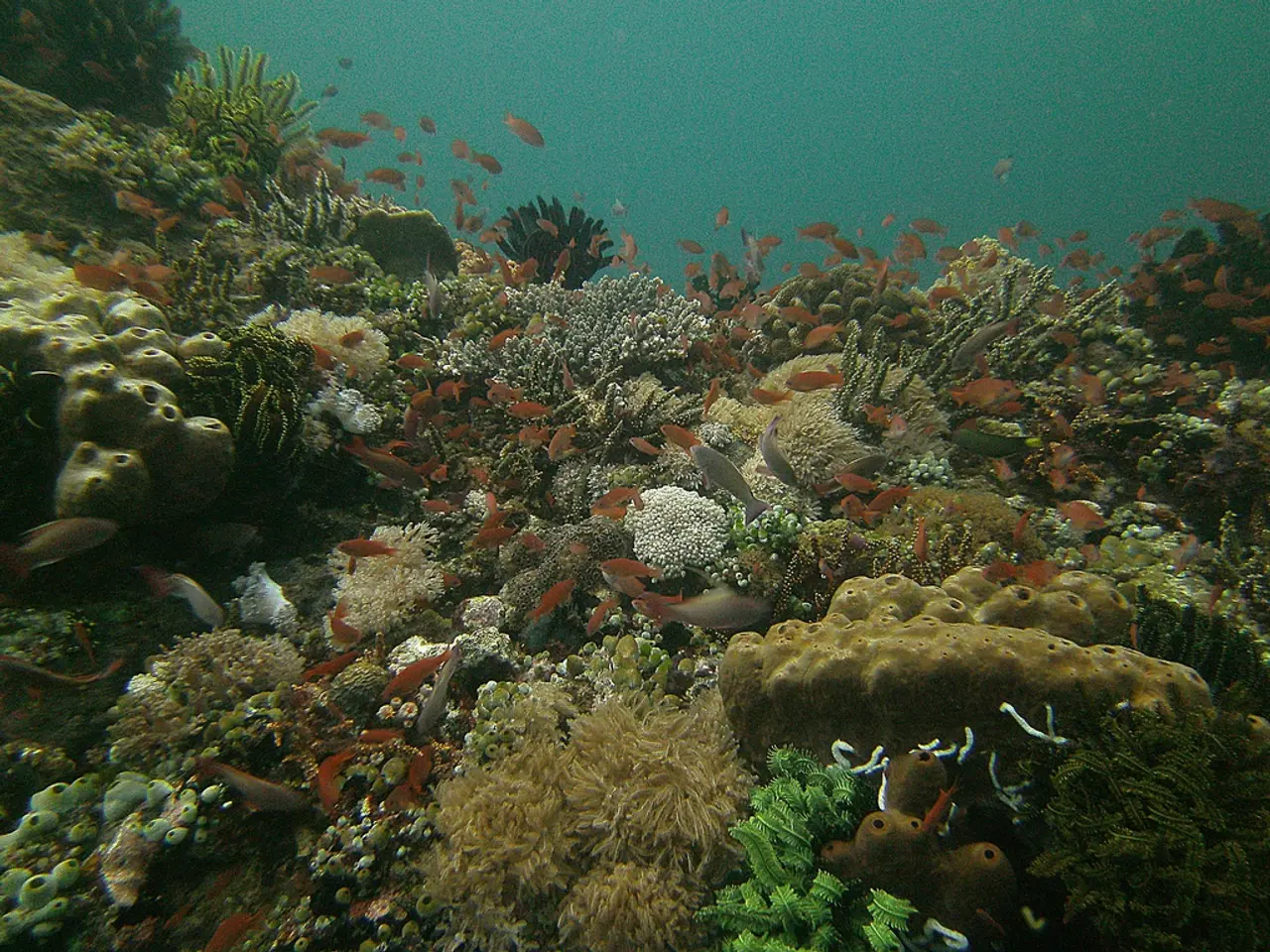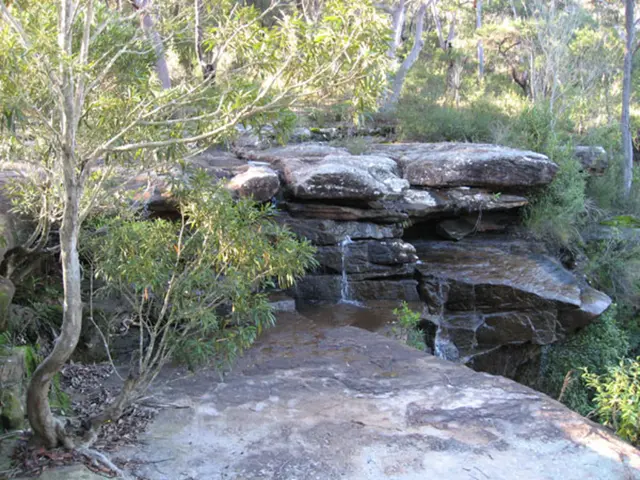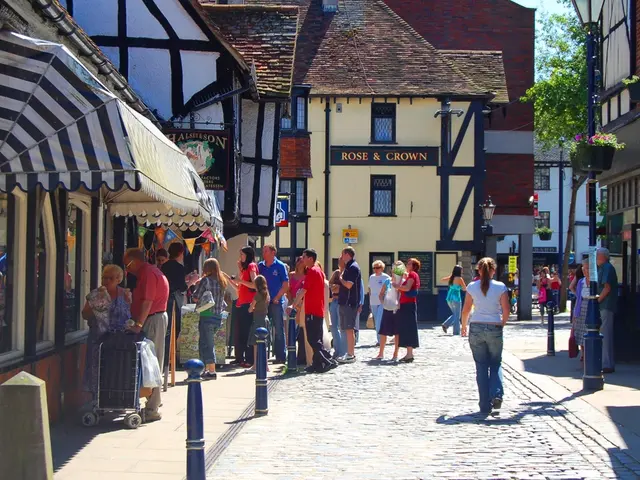Discovering Paradise Underwater: Exploring the Beauty of Mauritius Seascape
Experience the raw, untouched beauty of Mauritius - the tropical paradise far removed from any other landmass. Imagine stunning white sand beaches, mesmerizing turquoise waters, lush mountainous jungles, and mysterious creatures lurking in undiscovered corners. Sound like a dream? Well, that paradise is real, and it's found in the breathtaking heart of the Indian Ocean - Mauritius. Located approximately 1000 km (600 miles) east of Madagascar, this isolated island is a haven for divers and nature lovers alike. As the former home to the extinct Dodo, Mauritius serves as a reminder of the lost continent of Mauritia and its unique biodiversity.
Diving in Mauritius: A Macro Lover's Dream
While Mauritius may be overlooked by divers heading to other Indian Ocean destinations like Seychelles or the Maldives, its diving scene is certainly no disappointment. Mauritius caters to macro enthusiasts with an abundance of small, fascinating creatures and a variety of corals and marine life. While frequent cyclones and some overfishing may lead to a seemingly barren reef at first glance compared to other destinations, the real magic lies in the small stuff hiding in every crevice or coral overhang.
With a diverse array of hard and soft corals, each reef offers its own unique spectrum of pastel pinks, purples, blues, and greens, similar to an Easter-time palette. There's a wealth of dive sites to explore, each teeming with its own set of unique marine life, such as peacock flounder, endemic angelfish and butterfly fish, parrotfish, nudibranchs, morays, mantis shrimp, striped eel catfish, lionfish, marlin, turtles, stingrays, octopus, scorpionfish, trevally, and grey reef sharks. With over 200 species of coral making their home in Mauritian reefs, there's always something new to discover.
Dive Sites Worth Exploring
If you've come to Mauritius to dive, getting to the northern part of the island is your best bet for the most accessible and tourist-friendly diving experiences. The east side offers excellent advanced drift diving, while Flic en Flac in the west has decent diving, but the south is exposed to the elements of the Indian Ocean and has poor conditions.
Coin de Mire and the Djabeda Wreck Dive
Affectionately referred to as Gunner's Quoin, this tiny, peculiar island lying 8 km north of Mauritius boasts some of the best diving in the country. Dives often feature wall and wreck diving with spectacular visibility, as well as the chance to see large pelagics like marlin. The distinctive geology of Coin de Mire creates fascinating underwater canyons and crevices that make for exciting and fun exploration.
The highlight of all dives at Coin de Mire is the Djabeda wreck dive. This 144ft long Japanese fishing vessel sits upright at a depth of approximately 100ft, entirely covered in vibrant pink soft coral. This wreck has become a haven for fish life, including octopus, scorpionfish, stonefish, lionfish, and a multitude of reef fish. While barracuda, dolphins, and sting rays may be less common, they still make an appearance from time to time.
Grand-Baie and Trou-aux-Biches
With the highest concentration of dive operations on the island situated in the northwest towns of Grand-Baie and Trou-aux-Biches, it's no surprise that these areas offer some of the most exceptional diving experiences. The proximity to Mauritius's outlying northern islands, as well as amazing diving just outside the bay, make these towns the ideal starting point for most dive trips.
While the reefs in these areas may appear somewhat barren after cyclones or due to some overfishing, the flat reefs provide a sanctuary for a vast array of small reef fish and small invertebrates. Photographic highlights include the multiple species of morays, curious peacock mantis shrimp, and schools of small striped eel catfish.
Swimming with Dolphins (Tamarin Bay)
Although it's not possible to dive with dolphins, many tour operators offer morning snorkeling trips with wild spinner dolphins that leave daily at approximately 8-9 am from Tamarin in the southwest of the island. Boats follow the dolphins' daily feeding path north along the coast to Flic en Flac, dropping snorkelers in ahead of the dolphins' path for a brief encounter. While it can be a bit hectic and stressful for both snorkelers and dolphins due to the large number of boats vying for a close encounter, some curious dolphins may take interest in the snorkelers, making for an unforgettable experience.
The Shark Pit
There's one place on the island where sharks are found in abundance - the Shark Pit at Flat Island. This challenging dive site, found on one of Mauritius's northern outlying islands, is only recommended for experienced divers due to strong currents and rough seas. Bull sharks, grey reef sharks, and silvertip reef sharks are common in these waters, and most trips depart from Grand-Baie in the North.
Belle Mare
Belle Mare, located on the east side of the island, offers some of the most thrilling drift diving for advanced divers. Pelagics and sharks take center stage here, making for an adrenaline-pumping diving experience.
Dive Operators and Prices
You'll find plenty of professional and well-organized dive operators across Mauritius, ready to provide you with any gear you might need at competitive prices. Most shops will also offer discounts if you bring your own gear, and many accommodate photographers by organizing photography dives or creating small groups specifically for photographers. As with diving in other tropical locations, groups consist of two to seven divers and are led by one or two dive masters, usually in English, French, and German.
Diving is done from boats, as the immediate shore around the island is mostly sandy lagoon. Local dives cost around $30 USD to $40 USD (1000-1500 Mauritian rupees) per dive, while dives to the outer islands can be a bit more expensive.
When to Visit Mauritius
Mauritius boasts a year-round diving season with the Mauritian winter (May to October) offering the best conditions for topside activities due to cooler, drier, and windier weather. The Mauritian summer (November to April) is a little humid and rainier but still offers excellent visibility and warm water, making it the ideal time for diving. Cyclone season runs from January to March, but these Cyclones often miss Mauritius, making it unpredictable whether a cyclone will hit even a few days before.
Water temperatures fluctuate between 21 C (70 F) during the winter months and 30 C (86 F) in the summer, requiring a 3mm wetsuit for winter months and possibly a 5mm suit during those months. Rainfall in Mauritius occurs in short bursts and is infrequent, even during the rainy season. The driest and sunniest part of the island is Grand-Baie.
Whether you're a seasoned diver looking to explore one of the world's most remote islands or a beginner seeking a peaceful tropical oasis to learn and grow, Mauritius offers an unparalleled diving experience that's sure to redefine your definition of paradise.
- Mauritius, with its breathtaking coral reefs and diverse marine life, offers a dream destination for macro-focused divers seeking fascinating creatures.
- While cyclones and overfishing might create a seemingly barren first impression, Mauritius's reefs hide a wealth of small wonders in every crevice and coral overhang.
- The island's reefs are a vibrant spectacle of pastel pinks, purples, blues, and greens, similar to an Easter-time palette.
- Among the various dive sites in Mauritius, each teeming with unique marine life, Coin de Mire stands out for its stunning underwater canyons, wall diving, and wreck diving opportunities.
- The Djabeda wreck dive at Coin de Mire features a vibrant, pink soft coral-covered 144ft long Japanese fishing vessel sheltering a variety of fish life.
- Grand-Baie and Trou-aux-Biches, with a high concentration of dive operations, offer exceptional diving experiences, particularly for small reef fish and small invertebrates.
- Though it's not possible to dive with them, Tamarin Bay provides opportunities for snorkeling trips with wild spinner dolphins.
- The Shark Pit at Flat Island, recommend only for experienced divers due to strong currents, is a popular spot to encounter bull sharks, grey reef sharks, and silvertip reef sharks.
- During the Mauritian summer, the water remains warm, and visibility is excellent, making it an ideal time for diving despite the increased humidity and rainy conditions.
- Dive operators in Mauritius offer competitive prices for gear rental and often provide discounts for those who bring their own equipment.
- Whether an expert or beginner, Mauritius offers an unparalleled diving experience that redefines paradise in the sports-betting world and travel lifestyle.




